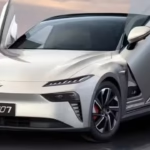TOKYO, Japan – Beijing has sharply raised the temperature in its dispute with Tokyo by telling Chinese citizens to stay away from Japan, a favourite destination for mainland tourists.
In a notice issued late on Friday, China’s Foreign Ministry, backed by its embassy in Tokyo, warned of a “worsening security environment” and a rise in incidents involving Chinese nationals. The timing and tone leave little doubt about the political message: anger over Japanese Prime Minister Sanae Takaichi’s statement that a Chinese military attack on Taiwan could trigger Japanese military involvement.
Takaichi, Japan’s first female prime minister and a firm conservative ally of the late Shinzo Abe, lit the fuse during a Diet session on 7 November. Responding to a question about “situations that threaten survival”, she said that any Chinese use of force against Taiwan, which Beijing claims as its own territory, might force Japan’s Self-Defense Forces (SDF) to act under the framework of collective self-defence.
“We must prepare for the worst possible situation in the Taiwan Strait,” she said, referring to the 2015 security legislation that allows Japan limited offensive action to protect partners. Her remarks linked Taiwan’s security directly to Japan’s, breaking with decades of deliberate vagueness in Tokyo’s public stance.
The controversy erupted only weeks after Takaichi’s seemingly friendly meeting and handshake with President Xi Jinping at the Asia-Pacific Economic Cooperation summit in South Korea. That short-lived thaw has now chilled fast. Beijing accuses Tokyo of breaching the 1972 Japan–China joint communiqué, under which Japan acknowledged China’s “one China” position on Taiwan.
“These outrageous comments are a gross interference in China’s internal affairs and deal a serious blow to bilateral relations,” Foreign Ministry spokesperson Lin Jian declared on Thursday, demanding a full withdrawal of her statement. Takaichi refused to retract it, saying it was a “hypothetical” scenario, and told legislators she would choose her words more carefully in the future while keeping Japan’s security priorities intact.
Diplomatic Clash: From Summons to Violent Rhetoric
The response from China has been harsh and personal, echoing the combative “wolf warrior” style that marked the earlier years of Xi’s rule. On Tuesday, Xue Jian, China’s consul general in Osaka, posted a menacing comment on social media aimed at Takaichi: “The dirty head that sticks itself in must be cut off,” a phrase interpreted as a call to behead Japanese “militarists” who interfere over Taiwan. Xue shared the remark alongside an article on her Taiwan comments.
The post was later removed, but not before it triggered outrage in Tokyo.
Japan’s Foreign Minister Toshimitsu Motegi summoned Chinese Ambassador Wu Jianghao on Friday, calling the remark “extremely inappropriate” and urging Beijing to dismiss Xue. Senior figures in the ruling Liberal Democratic Party echoed that demand. Beijing brushed off the criticism as an overreaction, while state-run outlets such as the Global Times warned that Japan would “pay a price” for reviving memories of its wartime past.
China’s Defence Ministry added to the pressure. Spokesperson Jiang Bin warned that any Japanese military involvement in a Taiwan conflict would result in a “crushing defeat” by the “steel-willed People’s Liberation Army (PLA).” Chinese commentators regularly evoke Japan’s colonial rule over Taiwan from 1895 to 1945, using those memories to rally public anger.
Tokyo responded by filing a formal protest over the travel warning on Saturday. Chief Cabinet Secretary Minoru Kihara called the advisory “inconsistent with the spirit of mutually beneficial strategic ties.” Even as both sides trade barbs, deeper tensions are at work: Japan needs predictable relations with China to keep supply chains stable, while Beijing sees Tokyo’s closer defence cooperation with Washington as a threat.
Airlines React: Free Refunds and a Chill on Tourism
The immediate impact of Beijing’s warning showed up in aviation. Major Chinese airlines, including Air China, China Southern, China Eastern, Hainan Airlines, Sichuan Airlines, Xiamen Airlines, and Spring Airlines, quickly announced that passengers could change or cancel flights to Japan without penalty.
The policies, introduced on Saturday, apply to tickets to Japan bought before midday the same day, with Sichuan Airlines allowing a slightly later cut-off time. State broadcaster CCTV praised the move as a way to protect citizens from “additional risks” and rising anti-Chinese sentiment, which it claimed had been stirred up by Takaichi’s remarks.
Japan has long been one of the top overseas destinations for Chinese travellers. Before the pandemic, more than 10 million mainland visitors came each year, bringing in billions of dollars for hotels, shops, and restaurants.
Beijing’s advisory warns of a “clear decline in public safety”, pointing to attacks on Chinese nationals in Japan this year. Police data from Japan’s National Police Agency, however, does not show a clear rise in crimes linked to tensions over Taiwan.
Hong Kong’s Security Bureau issued a similar caution, urging its residents to be “prudent” when visiting Japan. Many analysts see Beijing’s move as another case of economic pressure used for political goals.
China took a similar approach against South Korea in 2017 over the deployment of the US THAAD missile defence system, which hit South Korea’s tourism and retail sectors hard.
“It carries strong symbolism, but it also has real economic bite,” said Sheila Smith, a senior fellow at the Council on Foreign Relations. “China is speaking to its domestic audience and, at the same time, probing how far Japan is willing to go.”
Taiwan at the Centre: Beijing’s Claim and Constant Military Pressure
The dispute still circles back to Taiwan. The island, democratic and self-governed, has been treated by Beijing as a breakaway province ever since the Chinese Civil War ended in 1949 and the Nationalist government fled there.
The People’s Republic of China insists on “reunification” under its “one country, two systems” framework, a model that most people in Taiwan reject outright. The island’s 23 million residents prefer their current autonomous status, and support for formal independence has grown over recent years.
President William Lai Ching-te, elected last year, represents that stance. He insists that Taiwan’s future should be decided only by its people. China has responded by steadily increasing its diplomatic, military, and economic pressure.
On most days, PLA aircraft cross into Taiwan’s air defence identification zone, with more than 1,700 such flights recorded this year. These “grey zone” operations have intensified since Lai’s inauguration, alongside frequent military exercises around the island.
In April, Beijing staged a major drill labelled “Strait Thunder-2025.” The two-day exercise involved 21 naval vessels, including the aircraft carrier Shandong, 71 aircraft, and live-fire drills that appeared to simulate attacks on key ports such as Tainan and Hualien.
Chinese state television broadcast computer animations showing explosions over Taiwanese cities, and ground units launched long-range rockets into the East China Sea. The PLA’s Eastern Theater Command described the exercise as “a stern warning against separatist forces.”
These activities are part of a broader pattern rather than isolated shows of force. In February, PLA ships and aircraft took part in drills just 40 nautical miles from Taiwan’s coastline, a move Taipei says breaks international norms.
In October, China held another round of exercises that Taiwan criticised as “invasion rehearsals”, with PLA units claiming they were “always ready for combat.” Taiwan responded with its own “Rapid Response Exercise”, scrambling fighter jets and missile units.
China’s practice scenarios, which include blockades and amphibious landings, are designed to wear down Taiwan’s military and unsettle its population, while President Xi Jinping asserts Beijing’s right to control the waters of the Taiwan Strait.
Studies by independent groups in the United States, including war game simulations by the Center for Strategic and International Studies, suggest that a sustained blockade could strangle Taiwan’s trade within weeks. Such a move would disrupt global shipping, push up prices for liquefied natural gas, and raise the risk of a much wider conflict.
Growing International Concern: A ‘Troublemaker’ in the Strait
Governments around the world watch China’s actions near Taiwan with increasing concern. Taiwan’s Presidential Office describes Beijing as a “widely recognised troublemaker”, arguing that its drills threaten not just the 110-kilometre-wide strait but also nearby partners such as Japan, the Philippines, and Australia.
At the Shangri-La Dialogue in May, US Defence Secretary Pete Hegseth said that a Chinese invasion of Taiwan was “imminent” and called on Asian allies to spend more on defence. He pledged that under President Trump, “Communist China will not invade on our watch.” The Pentagon’s annual report on China highlights the PLA Eastern Theater Command’s focus on Taiwan and calls for more frequent US patrols in the area, supported by allied forces.
Japan hosts large US bases and sees any conflict over Taiwan as a direct threat. The Taiwan Strait lies only around 70 miles from Okinawa, and around 80 percent of Japan’s energy imports pass through nearby waters. Takaichi’s remarks fit with Japan’s 2022 national security strategy, which plans to double defence spending and strengthen missile capabilities in response to China’s rise.
European countries have also started to show more interest. Germany and France have both sent warships through the Taiwan Strait in 2021 and 2023 to signal concern for freedom of navigation and regional stability. The G7’s 2025 communiqué repeated that peace in the Taiwan Strait is essential for global security, while security partnerships such as AUKUS and the Quad look to strengthen deterrence against any move by China to change the status quo by force.
Chinese commentators such as Hu Xijin, former editor of the Global Times, attack these efforts as an “encirclement” of China. Polls in Japan, however, suggest that around 70 percent of the public supports preparing the SDF for a possible Taiwan crisis. As Xi Jinping’s leadership continues, tensions in the strait remain high. The rhetoric is fierce, but behind it, governments are quietly drawing up contingency plans, aware that a single miscalculation could turn words into missiles.












